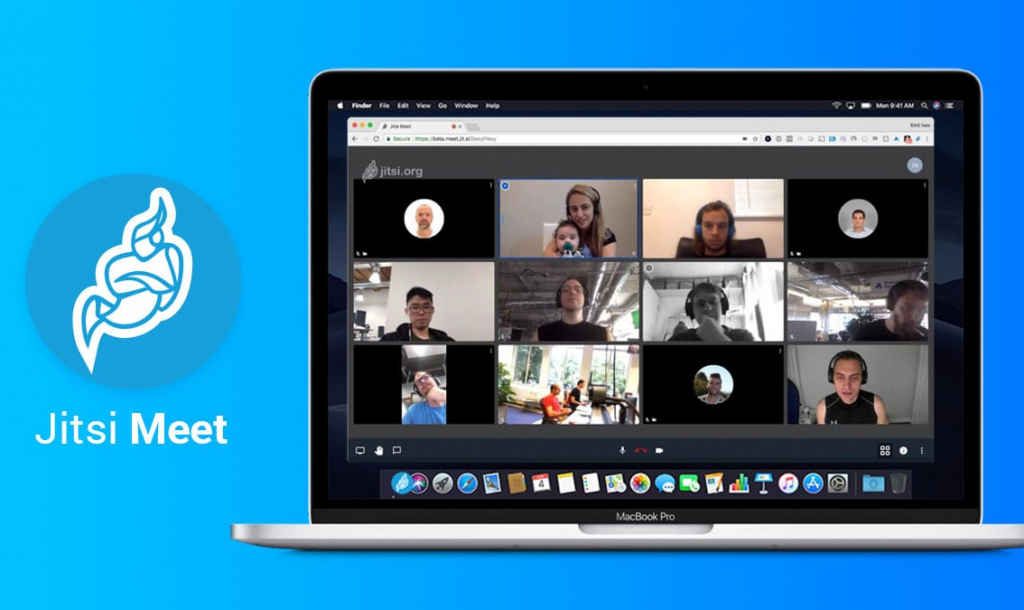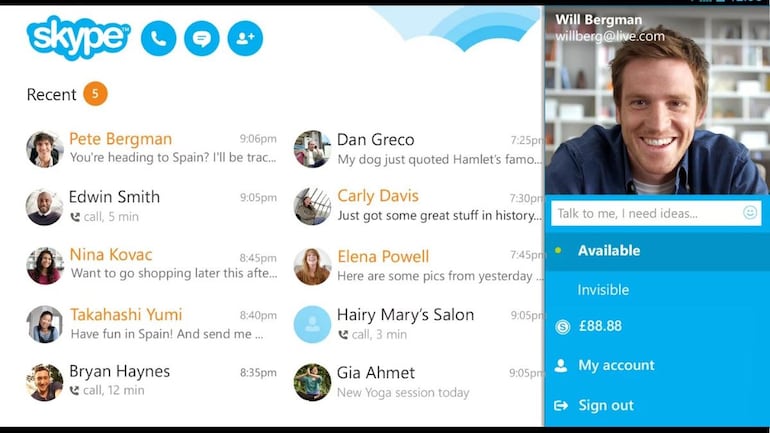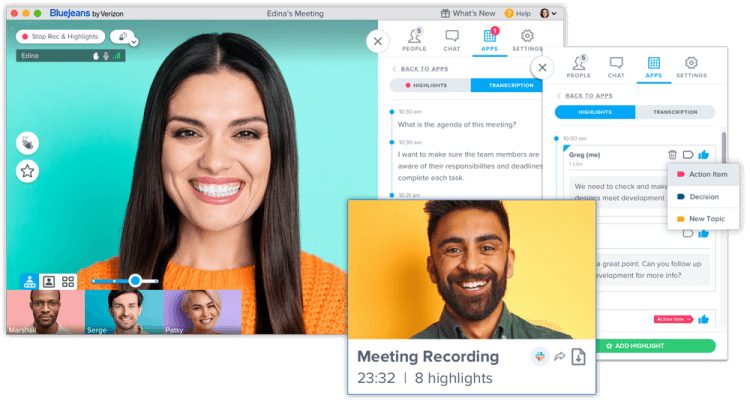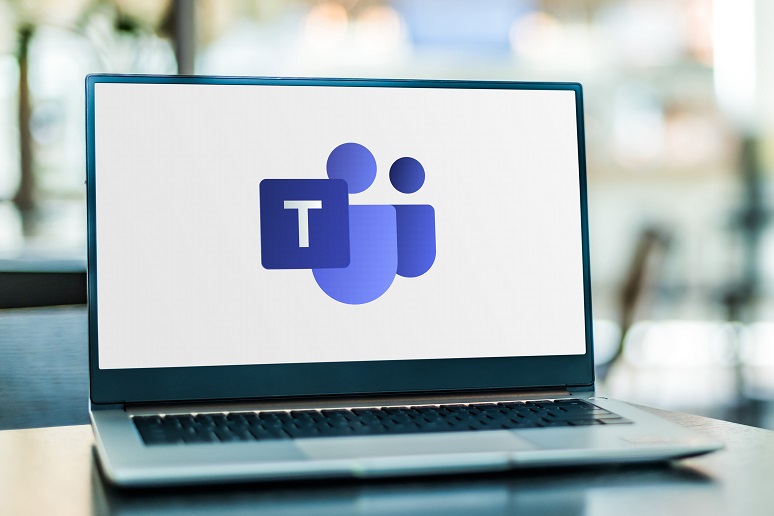Video conferencing was popular in the corporate sector even before the pandemic. However, the urgency of virtual meetings has skyrocketed ever since remote working became the norm. No wonder, the popularity of video conferencing apps has undergone a consistent spike in recent times in the corporate circuit. The need for remote work has resulted in a boom in the use of video conferencing platforms. This, in turn, has resulted in a high demand for virtual conferencing services.
Which are the best video conferencing apps?
While the leading video conferencing apps quickly underwent major upgrades, several new apps entered the market too. A number of less popular apps started gaining exposure and popularity, thus offering people plenty of options to choose from. Even today we have situation-specific apps that might suit specific requirements of enterprises.
Here, we will run you through the ten best video conferencing apps that can help to make your meetings successful.
1. Google Meet

Google Meet has undoubtedly grown into one of the most popularly used video conferencing apps, especially in formal settings. One of the key factors that make Google Meet perfect for corporate meetings is its integration with the G-Suite. It works well in conjunction with other Google products. For instance, the Google Calendar could give you a reminder for the meeting, along with a redirect link to join it. Employees using the Google ecosystem can easily get accustomed to using Meet and would find it convenient.
Google Meet comes with a neat interface and is extremely easy to use. Even employees who aren’t very tech-savvy can quickly learn to take part in virtual meetings via Meet. A room can accommodate 25 people and display ten at a time. Another key advantage of Google Meet is its multi platform support. The software would run on PC browsers, tablets, and smartphones, including Huawei smartphones that do not support Google Services.
Pros:
- G-Suite integration
- Wide platform support
- Ease of use
Cons:
- May not be suitable for large-scale meetings
- Anti-GAFAM employees might be reluctant to use Meet
Overall, Google Meet can prove to be an extremely convenient and useful tool for corporate meetings.
2. Jitsi Meet

If privacy is a major concern during your virtual conferences, Jitsi Meet would be a viable option. This app is particularly popular among individuals who are against GAFAM (Google, Amazon, Facebook, Apple, Microsoft). Besides the fact that Jitsi Meet does not steal any personal data, it also offers excellent privacy protection features, including built-in encryption.
Despite being relatively less popular, Jitsi Meet offers an extensive plethora of features that would prove to be helpful. One may record a conference on this app, share YouTube videos, broadcast live on YouTube, and blur the background with ease, thus enjoying a great deal of convenience. The design of the app is professional enough, with features that are specifically useful in corporate meetings. For instance, it allows users to ‘raise a hand’ to speak without interrupting the speaker.
Like Google Meet, Jitsi Meet runs on a wide range of devices too, including web browsers on PCs. However, a key advantage of this app is that it does not require the users to create an account. This offers a great deal of convenience as anyone can easily join meetings by clicking on the invite.
Pros:
- Excellent privacy and data protection
- Does not require creating an account
- Rich in helpful features
Cons:
- Audio and video quality may be poor if there are too many participants
- Three-hour time limit for each meeting
In case your employees aren’t comfortable with using a video conferencing tool from GAFAM, Jitsi meet would be a great option.
3. Skype

Skype is undoubtedly one of the most popular video conferencing platforms in contemporary times, both for personal and professional use. By default, Skype allows up to 50 participants per meeting. However, you may also opt for Skype for Business, a paid edition that offers specially augmented features for businesses. Skype for Business allows up to 250 participants and is a great choice for large meetings.
Skype not only runs on a wide range of platforms, but also supports calls over weaker connections, including 3G networks. During Skype meetings, participants can share files of up to 300MB in size, which is often helpful during corporate conferences. Skype also happens to be perfect for international communication, thanks to the real-time subtitles feature.
Pros:
- Supports large meetings with decent audio and video quality
- Offers real-time subtitling for calls
- Virtual whiteboarding features on the business version
Cons:
- The interface of the mobile app isn’t the best and can be hard to use
- There are video conferencing apps promising better security features
Especially if you have to host meetings with individuals who speak a different tongue, Skype can be extremely helpful.
4. Zoom

Rich in features, Zoom happens to be extremely popular across the globe. Zoom offers various pricing options, including a free version. The enterprise-level plan offered by Zoom would be particularly suitable for large companies. It comes with features like custom emails, unlimited cloud storage, vanity URLs, and an upper limit of 200 participants. The variety of available plans helps to enjoy custom conferencing solutions for businesses.
The free plan is quite good too, with a capacity of 100 participants. The virtual background capability of Zoom is one of its key selling points among remote workers. Even while joining the call from a messy room, the participants can easily set up a professional-looking background.
However, security may potentially be an issue with Zoom. Not long ago, there have been various cyberattacks on Zoom meetings. Zoom, however, has claimed to be working on providing better security and privacy protection.
Pros:
- Supports very large meetings
- Offers virtual backgrounds
- Wide range of business-oriented features
Cons:
- Security and privacy may not be reliable
- Inconsistency in cloud file sizes
If you need to host large meetings and webinars, Zoom would be a good choice.
5. BlueJeans Meetings

If you are looking for enterprise-level video conferencing solutions, BlueJeans Meetings is a viable option. Its integration with other major collaboration tools makes it extremely useful for corporate use. This platform also stands out due to its simplicity that helps to host or join meetings anywhere with ease.
The interface of BlueJeans Meetings deserves a special mention, with its dashboards imparting helpful information to the users. Content sharing is seamless and the digital whiteboard makes the app suitable for brainstorming too. Other notable aspects include intelligent smart meeting features, enterprise-level security, and excellent audio-visual. While this is a paid service, you may opt for a 30-day free trial to test out the platform.
Pros:
- Superior integration with other tools
- Dolby-powered audio
- No need for app download
Cons:
- Conferencing through the browser without downloading the app can be glitchy
- No option to cancel background noises
If you are looking for a professional video conferencing tool and do not mind paying for it, BlueJeans Meetings is an option you may consider.
6. Microsoft Teams

When it comes to integration with other software, Microsoft Teams is another platform that you cannot ignore. Especially if your business is already using Microsoft 365, it would be convenient to implement Teams for video conferencing. Complete integration with various collaboration tools would make work much more convenient for the employees. In turn, this would help them be more productive at their jobs.
Due to the fact that Microsoft Teams is a cloud-based platform, it comes with superior processing power. Tools from Microsoft are typically known to be user-friendly, and Teams is no different. It would be easy for your employees to grow accustomed to using the platform, given that they are already familiar with the Microsoft ecosystem.
Installing Microsoft Teams is a hassle-free process. In fact, if your employees are already using Microsoft 365, chances are high that they already have Teams in the applications.
Pros:
- Easy to implement and use
- Integrated with other major tools
- Professional user interface
Cons:
- Lack of flexibility
- File structures may be confusing for the users
If your enterprise is already relying on Microsoft tools, you may go ahead and try out Microsoft Teams.
7. WhatsApp

If your meetings are generally small and you do not wish to invest in paid services, WhatsApp is one of the simplest solutions. Due to the fact that WhatsApp is an extremely popular app, your team likely wouldn’t need much time to adapt to it. While it does require them to download an app, the chances are high that they already have it. However, as mentioned earlier, video conferences on WhatsApp have a small capacity, with a limit of eight participants at the most.
WhatsApp also offers end-to-end encryption, thus ensuring highly secure and private meetings. Moreover, you would also enjoy the luxury of being able to host meetings for as long as you wish, as WhatsApp video calls do not have any time limit. However, you might want to note that video conferencing on WhatsApp is not possible on computers.
Pros:
- Free and easy to use
- Secure
- Supports long meetings
Cons:
- Maximum eight participants
- Does not work on computers
While WhatsApp isn’t the most professional video conferencing tool, it can be a viable choice for smaller companies.
8. Kaltura

Kaltura is yet another professional video conferencing platform with great collaborative capabilities. The app is easy to integrate into existing workflows, thereby boosting productivity. Kaltura offers a plethora of helpful features, such as allowing users to embed high-quality videos on the go. Additionally, it is also possible to create discussion posts, record live sessions and make welcome announcements. All these features make Kaltura highly suitable for corporate meetings.
Another major perk offered by Kaltura is its video quality. Even while using a laptop webcam, it works quite well. Its interface makes it easy to learn using the platform. However, you might want to take note of the fact that the app does not come with the best technical support.
Pros:
- Easy collaboration
- High video quality
- Helpful additional features
Cons:
- Poor support
- The back-end analytics aren’t great
Kaltura is a good choice for large meetings, and can accommodate an unlimited number of participants.
9. Hangouts

Hangouts from Google has been a popular messaging app for quite a while, particularly in the professional field. Its integration with Gmail ensures a great deal of convenience for workplace communication. However, it also comes with a video conferencing function. Video Hangouts is easy to use and runs on a multitude of devices. Chrome even offers a dedicated extension for hangouts.
Hangouts would be a good option if you are looking for something rather simple without too many additional features. However, it requires Google+, and might be a little complicated to implement.
Pros:
- Easy to send attachments through Hangouts
- Multi-platform support
- Secure app
Cons:
- Requires a Google+ account
- Not so appealing to employees who are anti-GAFAM
10. Slack

One of the oldest platforms for collaborative platforms for corporate work, Slack continues to be extremely popular. Video conferencing is an add-on over the primary functionalities of the platform. Due to its collaborative nature, Slack is quite convenient to use for meetings. The free version, however, only allows up to 15 maximum participants. In case you need to host a larger meeting, you may opt for an enterprise plan.
Besides video conferences, slack allows seamless communication with the employees through chat. It is possible to create multiple chat channels as necessary.
Pros:
- Collaborative features
- Chat channels
- Excellent security
Cons:
- Can be distracting
- Auto deletes conversations after two weeks
If your company has already been using Slack, it would be easy to implement the video conferencing add-on.
Conclusion
Thus, it is evident that the options out there are plenty. Every video conferencing tool has its individual pros and cons. Whether you want a free tool or something extremely professional, you can get the best app customized. Simply explore your options and pick the one that perfectly fits your business.






